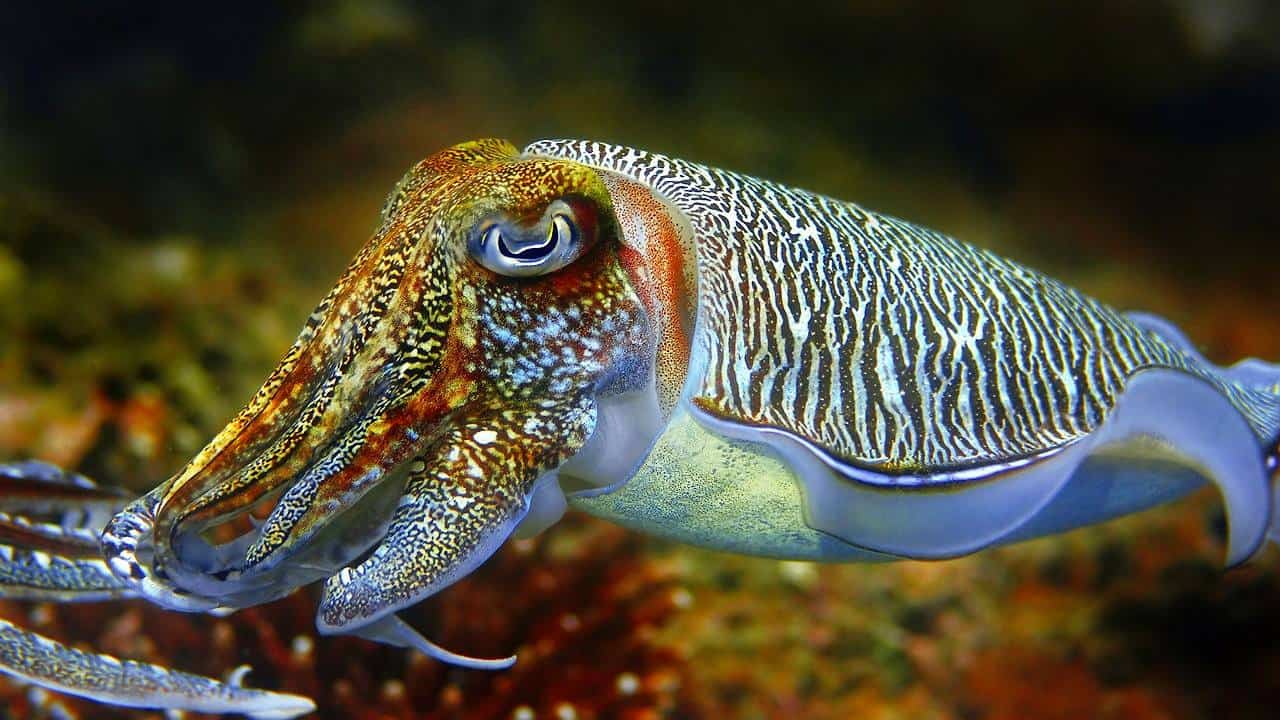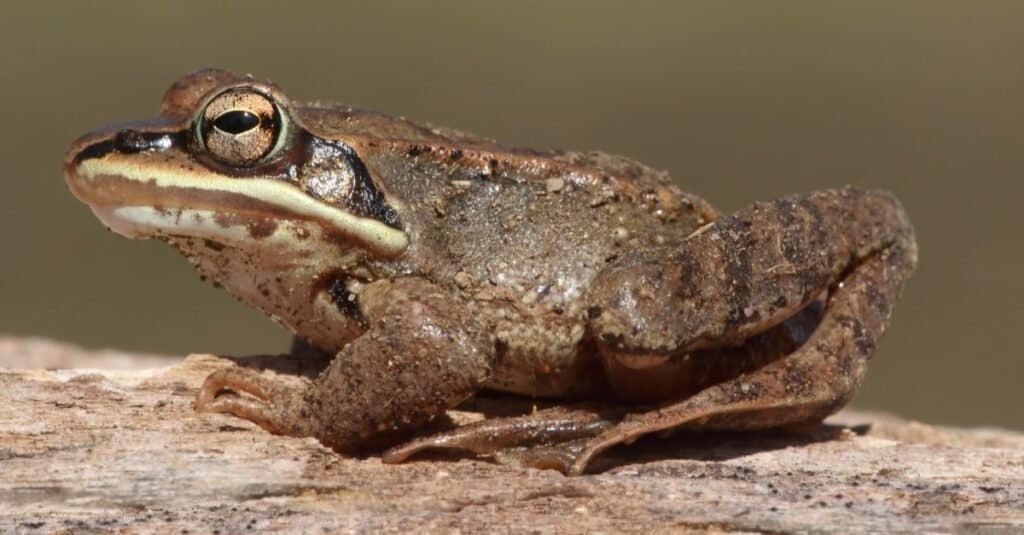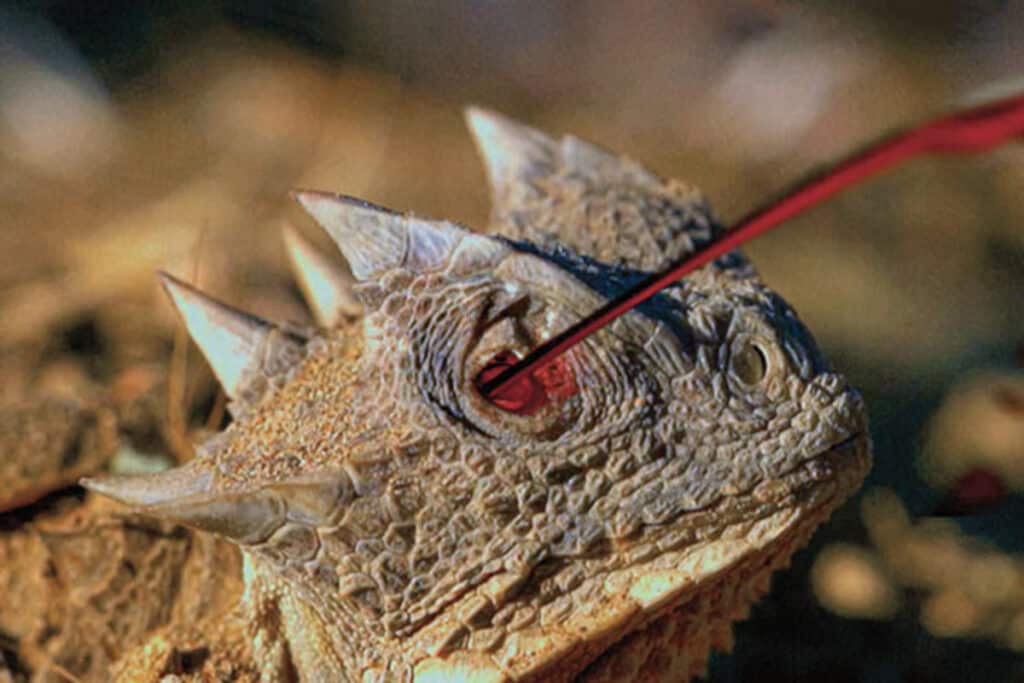The animal kingdom is full of incredible creatures with unique and fascinating adaptations. From the ability to survive in extreme environments to bizarre defense mechanisms, animals have developed some truly amazing superpowers. In this article, we will explore the top 8 craziest animal adaptations, showcasing the remarkable diversity and ingenuity of the natural world.
But don’t expect these animal superheroes to wear capes or fight crime in the city. Their powers are often subtle, hidden, and perfectly suited to their environments. So, let’s dive into the world of these extraordinary creatures and discover the secrets behind their amazing abilities.
You are reading: The Top 8 Craziest Animal Adaptations

The Top 8 Craziest Animal Adaptations
Wood Frog

The wood frog (Rana sylvatica) is a small amphibian found in the United States throughout the forests of Alaska and the Northeast. They are the only frogs that live north of the Arctic Circle.
These frogs have a unique adaptation that allows them to survive in extremely cold environments, including the Arctic Circle. During winter, they stop breathing, and their hearts stop beating. Their bodies freeze over, and they enter a state of suspended animation. This adaptation helps them survive in cold environments where other frogs would not be able to survive.
The wood frog possesses a chemical secret called glycogen that prevents ice crystals from forming inside the frog’s cells, keeping them from rupturing when the frog’s internal temperature drops below freezing.
By mid-winter, it’s as if the frog is clinically dead. Its heart has stopped beating, its brain activity has ceased, and its body is completely frozen. When spring arrives, the frog thaws out and returns to its normal activities.
Horned Lizard

The horned lizard is a reptile found in the North American desert that has developed a number of remarkable defenses to combat its predators. Its primary defense mechanism is its extraordinary camouflaging abilities. However, when threatened, the horned lizard has a unique adaptation that allows it to shoot blood from its eyes as a defense mechanism.
The horned lizard has two constricting muscles that line the major veins around its eye. When these muscles contract, they cut off blood flow back to the heart, while it continues to flow into the head. This floods the ocular sinuses with blood, building pressure, and causing them to bulge.
By further contracting these muscles in a rapid manner, the pressure increases even more, eventually rupturing the thin sinus membranes. The horned lizard then uses the bulging ocular sinuses to draw the debris away from the rear of the eye and onto the eyelid. Once the lizard has successfully shot blood from its eyes, the predator is often frightened and flees.
Cuttlefish
The cuttlefish is a cephalopod that has developed one of the most remarkable adaptations in the animal kingdom.
Cuttlefish are masters of disguise, and they can change the color and texture of their skin in an instant using chromatophores organs under the skin that expand and contract pigment sacs. They also possess muscles called papillae, which they use to change the three-dimensional physical texture of their skin at the same time.
As a result, a cuttlefish can go from smooth white skin to resembling a piece of seaweed in a matter of seconds. This adaptation helps them hide from both predators and prey.
Cuttlefish can alter their appearance to match their background in brightness, color, pattern, and texture. They can detect how much light is being absorbed into the environment and then mimic it with their own pigments.
Read more : Top 10 Happiest Animals On Earth
They have three skin layers (yellow, red, and brown), which can be stretched in different ways to make unique colors and patterns. Their skin also has papillae, which let cuttlefish appear rigid, like coral. Together, these features allow cuttlefish to escape predators, as well as to sneak up on unsuspecting prey.
Collared Peccary
The collared peccary (Pecari tajacu) is an omnivorous mammal that is highly adaptable and capable of surviving and flourishing in tropical rainforests and deserts alike.
One of the craziest adaptations of the collared peccary is its ability to survive in various habitats. Its diet is mostly based on plants, but it can also eat small animals when necessary.
The collared peccary lives in brushy desert areas and rocky canyons, and it is usually found near a water source. It has also adapted to life in residential human neighborhoods.
The collared peccary lives in herds of between 6-30 individuals, and the dominant male of the herd will mate with the females as they come into heat. If more than one female comes into heat at the same time, a subordinate male may mate with her.
Collared peccaries have large dorsal scent glands anterior to the bases of their tails, which secrete a liquid they use to mark territories. Collared peccaries mark trees, rocks, and other objects in their home range to communicate territorial boundaries with different herds.
Kangaroo Rat
The kangaroo rat (Dipodomys) is a small rodent that lives in the desert. It has developed several remarkable adaptations that allow it to survive in the harsh desert environment.
Here are some of the craziest adaptations of the kangaroo rat:
– Massive hind legs: Kangaroo rats have massive hind legs that allow them to jump up to nine feet at a time, allowing them to escape fast and sneaky predators.
No need for water: Kangaroo rats can survive without ever drinking any water, getting needed moisture from the seeds they eat.
– Camouflage: Kangaroo rats have a yellowish-brown fur with a white belly, while the tail has a noticeable white tip. This coloration helps them blend in with the sandy soils of the desert washes, providing them with camouflage from predators.
– Small front feet and sharp claws: Kangaroo rats have smaller front feet for handling food and sharp claws for digging burrows. These physical adaptations help the kangaroo rat to survive in its habitat.
Behavioral adaptations: Kangaroo rats have been seen kicking sand behind them to try to blind a predator that is in pursuit. This is a behavioral adaptation.
Together, these adaptations make the kangaroo rat a master of desert survival. They have developed amazing adaptations that reduce the amount of water needed and the amount of water that is lost. They are also able to detect and escape predators easily, making them one of the most fascinating creatures in the animal kingdom.
Antarctic Fish
Antarctic fish have developed some of the most remarkable adaptations in the animal kingdom to survive in the frigid waters of the Antarctic. Here are some of the craziest adaptations of Antarctic fish:
– Antifreeze proteins: One of the most well-known adaptations of Antarctic fish is the presence of antifreeze proteins in their blood. These proteins prevent ice crystals from forming in their cells, allowing them to survive in the freezing waters of the Antarctic.
– Slow metabolism: Antarctic fish have a slower metabolism than other fish, which allows them to conserve energy in the cold waters.
Reduced bone density: Antarctic fish have reduced bone density, which makes them more buoyant and helps them swim more efficiently in the water.
– Larger hearts: Antarctic fish have larger hearts than other fish, which helps them pump more blood through their bodies to keep their organs warm.
Reduced red blood cells: Antarctic fish have fewer red blood cells than other fish, which reduces the risk of blood clots in the cold water.
Together, these adaptations allow Antarctic fish to survive in one of the harshest environments on Earth. They have developed unique ways to prevent their bodies from freezing, conserve energy, and swim efficiently in the water.
These adaptations have allowed them to thrive in the Antarctic and become one of the most fascinating creatures in the animal kingdom.
Okapi
The okapi is a strange-looking animal that is native to the Democratic Republic of Congo. It has several key adaptations for survival in its habitat.
Here are some of the craziest adaptations of the okapi:
– Scent glands on their feet: Okapi have scent glands on their feet that they use to mark their territory.
– Infrasonic calls: Okapi have infrasonic calls that allow them to communicate with their calves without predators hearing their calls.
– Camouflage: Okapi have dark, striped coats that help them blend in with the sun-streaked tropical rainforest.
– Shorter legs and necks: Okapi have shorter legs and necks that help them swerve and maneuver around obstacles in the dense rainforest.
– Herbivorous diet: Okapi are herbivores and feed on leaves, fruits, grasses, and some species of fungi. They also eat a reddish clay that provides essential salt and minerals.
Together, these adaptations make the okapi a master of survival in the dense rainforest. They have developed unique ways to communicate, mark their territory, and blend in with their surroundings.
Read more : Discover 4 Animals That Lurk Atop Hawaii’s Tallest Mountain
These adaptations have allowed them to thrive in their habitat and become one of the most fascinating creatures in the animal kingdom.
Diving Bell Spider
The diving bell spider (Argyroneta aquatica) is a unique spider that spends its entire life underwater.
Here are some of the craziest adaptations of the diving bell spider:
Diving bell:
– The diving bell spider builds its own diving bell by spinning a dome-shaped web between underwater plants. It rises to the surface and traps bubbles using the fine hairs on its legs and belly. It carries them down to its web and releases them, gradually filling the dome with air. After a few trips, the spider has amassed a bubble so large that it can fit inside.
– The spider’s diving bell is extraordinarily efficient at exchanging gases, allowing the spider to extract oxygen from even the most stagnant of water. As such, the spiders can stay inside their sanctuaries for more than a day without having to replenish them.
Water-repellent hairs: Water-repellent hairs on the spider’s body trap a layer of air around the spider, allowing it to breathe underwater.
Unique respiratory system: The diving bell spider has a unique respiratory system that allows it to extract oxygen from the water. It has book lungs and tracheae, which are positioned in such a way that the spider need only place its bum into the bell in order to breathe.
Together, these adaptations make the diving bell spider one of the most fascinating creatures in the animal kingdom. They have developed unique ways to breathe underwater and build their own diving bell, allowing them to survive in an environment that is hostile to most other spiders.
FAQS
1. What are animal adaptations?
Animal adaptations are physical or behavioral traits that help animals survive in their environment. These adaptations can be anything from camouflage to unique ways of obtaining food or water.
2. What are some of the craziest animal adaptations?
Some of the craziest animal adaptations include the wood frog’s ability to freeze its body to survive in extreme cold, the cuttlefish’s ability to change color and texture to blend in with its surroundings, and the diving bell spider’s ability to build its own diving bell to breathe underwater.
3. How do animals adapt to their environment?
Animals adapt to their environment through a process called natural selection. Over time, animals with traits that help them survive in their environment are more likely to pass those traits on to their offspring, while animals without those traits are less likely to survive and reproduce.
4. Why do animals need to adapt?
Animals need to adapt to their environment in order to survive and reproduce. If an animal is not well-suited to its environment, it will have a harder time finding food, avoiding predators, and reproducing, which can lead to its extinction.
5. What are some other examples of animal adaptations?
Other examples of animal adaptations include the kangaroo rat’s ability to survive without drinking water, the horned lizard’s ability to shoot blood from its eyes as a defense mechanism, and the okapi’s scent glands on its feet to mark its territory.
Source: https://petstutorial.com
Category: Animals










